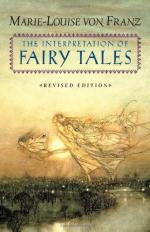
|
| Name: _________________________ | Period: ___________________ |
This quiz consists of 5 multiple choice and 5 short answer questions through Chapter 2, and Chapter 3.
Multiple Choice Questions
1. Theodor Benfey traced all fairy tales to where?
(a) Africa.
(b) India.
(c) England.
(d) China.
2. Which individual tried to interestingly link dreams with fairy tales, though he had none of the psychoanalytic or Jungian vocabulary to assist him?
(a) E. Stuck.
(b) Ludwig Laistner.
(c) Theodor Benfey.
(d) Kaarle Krohn.
3. Who wrote the work Symbolik des Marchens for which Marie-Louise von Franz contributed interpretation?
(a) Bruno Bettelheim.
(b) Ernst Federn.
(c) Hedwig von Beit.
(d) Carl Jung.
4. What refers to the masculine essence buried in the unconscious of every woman in Jungian psychology?
(a) Id.
(b) Animus.
(c) Anima.
(d) Self.
5. Which individual linked fairy tales to "elementary thoughts" and even "national thoughts," notions that might be precursors to Jung?
(a) Ludwig Laister.
(b) Kaarle Krohn.
(c) Theodor Benfey.
(d) Adolf Bastian.
Short Answer Questions
1. Who is the author of Types of Folk Tales?
2. What does Von Franz equates to the timelessness/spacelessness of the unconscious in fairy tales?
3. Who wrote The Uses of Enchantment: The Meaning and Importance of Fairy Tales?
4. The author states that there are those that believe in the theory of the "decayed myth," that is, larger myths "decay" and break down over time, fragmenting into episodes that get retained as what?
5. What German philosopher, theologian, poet, and literary critic is associated with the periods of Enlightenment, Sturm und Drang, and Weimar Classicism?
|
This section contains 243 words (approx. 1 page at 300 words per page) |

|




